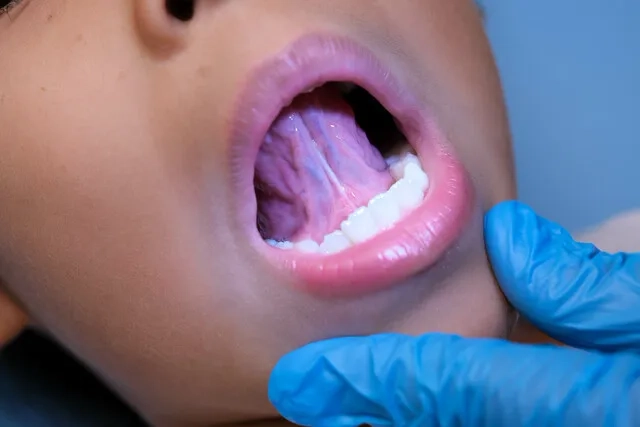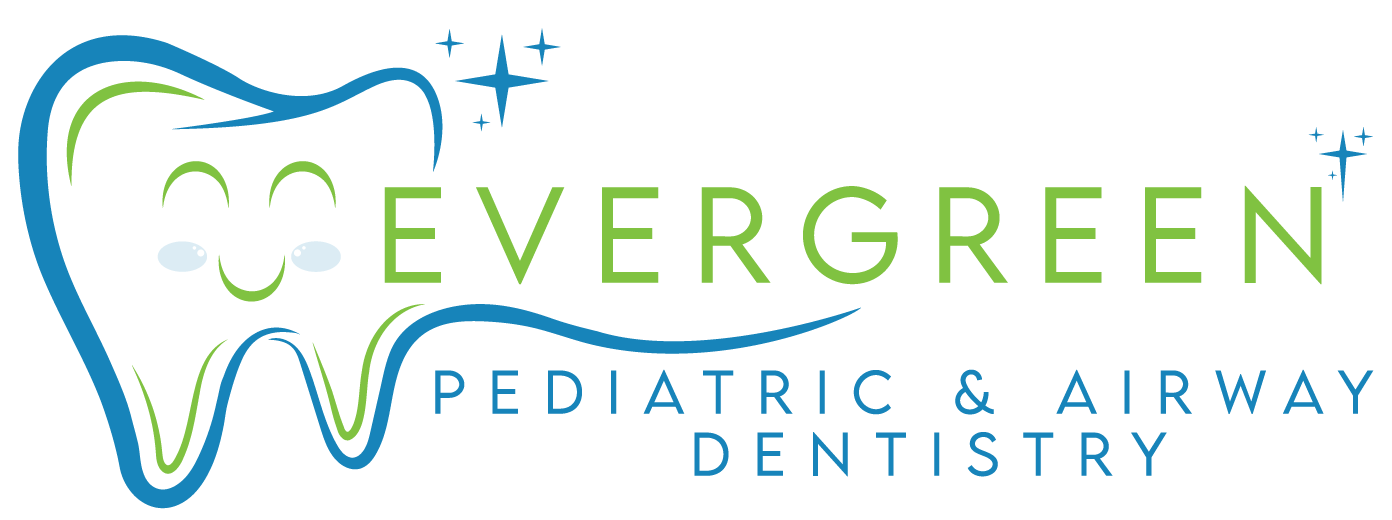Laser Tongue Tie Near Me Bellevue WA
Navigating the landscape of health services can often seem like an overwhelming task, especially when it comes to finding quality laser tongue tie treatments in your local area. But rest easy, this guide is here to serve as your compass in this journey. Tongue ties, medically known as ankyloglossia, though common, can present a myriad of challenges from feeding issues in infants to speech difficulties in older children and adults. The good news is that with the right treatment – such as laser frenectomy – these hurdles can be overcome effectively. However, the pivotal question remains: how do you locate a proficient provider who not only has mastery over cutting-edge technology but also provides empathetic care? This guide is designed to help you answer just that. We will delve into the crucial factors to consider, the right questions to ask, and even offer tips on how to discern the best services near you. So gear up and let’s embark on this journey towards finding top-notch laser tongue tie services in Bellevue WA!
Understanding the Tie That Binds (Or Doesn’t)
Tongue-tie, or ankyloglossia, is a condition that occurs when the frenulum – the tissue connecting the underside of the tongue to the floor of the mouth – is too short or tight. This can affect a person’s ability to move their tongue freely, and in cases of total ankyloglossia, the tongue appears fused to the floor of the mouth. For many, understanding the “tie that binds” in these situations can lead to beneficial treatment options, such as laser tongue-tie release.
The primary treatment for tongue-tie involves creating a small opening in the mucosa, the skin under the tongue. This reveals the restrictive, embryonic fibers that are causing the issue. One popular method of achieving this is through a minor surgical procedure known as a frenectomy. The procedure can be performed using a scalpel or, increasingly, a laser.
Laser tongue-tie release has several advantages. For one, it’s a precise procedure that neatly cuts the soft tissue without the need for stitches, making it particularly suitable for infants. Additionally, lasers minimize bleeding and may reduce the risk of infection post-procedure.
However, it’s vital to understand that tongue-tie release isn’t just about the procedure itself. Proper aftercare is just as crucial. Understanding how to care for oral wounds post-procedure can significantly impact the success of the treatment. This includes knowing how to clean the area, what foods to avoid, and signs of potential complications to watch out for.
Lastly, it’s important to remember that each case of tongue-tie is unique. While some individuals may exhibit clear symptoms such as difficulty latching onto a breast for infants, or issues with speech for older children and adults, others may have less obvious symptoms. Therefore, diagnosis and treatment should always be tailored to the individual’s specific needs and circumstances.
In conclusion, understanding the tie that binds – or doesn’t – for laser tongue tie is crucial for anyone dealing with this condition. With the right knowledge and treatment, individuals can overcome the challenges posed by tongue-tie and improve their quality of life.
The Tongue Tie Treatment Arsenal
The tongue-tie condition, also known as ankyloglossia, is a medical issue that can affect people from infancy through adulthood. It’s caused by a short or tight lingual frenulum, the band of tissue connecting the underside of the tongue to the floor of the mouth. This can result in restricted tongue movement, impacting speech, eating, and in infants, breastfeeding. Thankfully, the arsenal of treatments for this condition has expanded significantly, with laser tongue tie release becoming a popular choice.
Laser tongue tie release, or frenectomy, is a procedure that uses laser technology to cut the restrictive frenulum. This allows for improved tongue mobility. The precision offered by lasers ensures minimal damage to surrounding tissues, making it a preferred technique for many healthcare professionals.
However, much like any other treatment, laser tongue tie release requires thorough preparation. Before the procedure, healthcare providers usually conduct a comprehensive assessment of the patient’s oral anatomy, symptoms, and overall health. This helps in planning a personalized treatment approach that caters to the individual’s specific needs.
Post-procedure care is another crucial aspect of the tongue tie treatment arsenal. After a laser tongue tie release, patients are often advised to perform exercises that promote healing and enhance tongue mobility. These exercises, often referred to as “tongue stretches” or “wound management,” are essential to prevent reattachment and to maximize the benefits of the procedure.
Finally, it’s important to note that while laser tongue tie release is a beneficial treatment, it’s not a standalone solution. Particularly in older children and adults, additional therapies such as speech therapy may be required to fully address the issues caused by tongue-tie. This holistic approach ensures that all aspects of the condition are addressed, leading to more successful outcomes.
In conclusion, the tongue tie treatment arsenal, specifically about laser tongue tie release, is a comprehensive approach. It involves thorough patient assessment, precise laser treatment, dedicated post-procedure care, and additional therapies as needed. With this arsenal at their disposal, healthcare providers can effectively address tongue-tie, improving patients’ quality of life.
Courts of Quality: Identifying First-Rate Laser Tongue Tie Services
As the understanding of tongue-tie conditions and their implications on health and development grows, so does the demand for high-quality services to address this issue. Tongue-tie, or ankyloglossia, is a condition that restricts the tongue’s range of motion, and if left untreated, can lead to difficulties in speech, eating, and in infants, breastfeeding. Identifying first-rate laser tongue tie services is crucial for effective treatment, and there are several key factors to consider.
Firstly, the choice of tool used for the procedure is crucial. Although scissors were traditionally used for tongue-tie releases, newer options have emerged that offer more precision and potentially better outcomes. Among these, lasers are particularly effective. The use of lasers allows for a clean cut with minimal damage to surrounding tissues, reducing the risk of complications and promoting faster healing.
Secondly, patient-focused care is a hallmark of quality services. This involves not only the procedure itself but also comprehensive pre-procedure assessment and post-procedure care. A thorough examination before the procedure helps tailor the treatment to the individual’s specific needs. After the procedure, follow-up care and guidance, such as exercises to prevent reattachment and improve tongue mobility, are crucial for successful outcomes.

Laser Tongue Tie Near Me Bellevue WA
Thirdly, look for services that specialize in tongue-tie releases. Specialists in this field will have the necessary experience and expertise to handle various cases, from straightforward to complex. They are also more likely to stay updated on the latest research and advancements in the field, ensuring that patients receive the most effective treatment.
Fourthly, consider the feedback from previous patients. The experiences of others can provide valuable insights into the quality of services provided. Pay attention to aspects like the level of pain experienced during and after the procedure, the effectiveness of the treatment, and the overall satisfaction with the service.
Finally, keep in mind that while laser tongue tie release is an effective treatment for many, it may not be the right solution for everyone. Some individuals might require additional treatments, such as speech therapy, to fully address the issues caused by tongue-tie. Therefore, quality services should offer a holistic approach to treatment, considering all aspects of the patient’s condition.
In conclusion, identifying first-rate laser tongue tie services involves careful consideration of various factors, including the tools used, patient-focused care, specialization, feedback from previous patients, and a holistic approach to treatment. With these considerations in mind, you can find a service that offers effective, high-quality care for tongue-tie conditions.
Immediate Aftercare: What To Expect Post-Laser Frenectomy
The process of healing and recovery after a laser frenectomy, or tongue tie release, can be a journey filled with anticipation and questions. What can you expect immediately after the procedure? And how should you care for your child or yourself in the days that follow? Here’s a comprehensive guide to help navigate the immediate aftercare post-laser frenectomy.
Immediately following a laser frenectomy, patients, especially infants, are typically encouraged to resume feeding. This is not just for nutritional needs, but also as a comforting measure. This immediate return to feeding can be surprising to some, but it highlights the minimally invasive nature of the procedure and its quick recovery time.
That said, while feeding can resume promptly, full recovery may take a bit longer. Generally, it takes around three to seven days for patients to make a complete recovery. During this period, it’s important to keep an eye on the surgical site and observe any changes.
One thing that might stand out is the appearance of yellowish or white skin at the surgery site. This is entirely normal and part of the healing process. Over time, this area will gradually return to a normal color, usually within a few weeks. It might seem alarming initially, but rest assured, it’s a typical part of recovery.
Another integral part of the aftercare process involves exercises that promote healing and prevent reattachment. These exercises, which should last around 15 to 30 seconds, are recommended to be performed multiple times a day. Do note that results may not be immediate. Improvement can sometimes take a few weeks, especially in older babies or children, so patience and consistency are key.
Lastly, the overall recovery and healing process can take anywhere between two to four weeks. This period, known as contracture, involves the surgical area tightening up. It’s crucial during this stage to continue with the recommended exercises and aftercare measures to ensure optimal healing and avoid complications.
In conclusion, immediate aftercare post-laser frenectomy involves immediate resumption of feeding, monitoring of the surgical site, regular exercises to promote healing, and patience during the recovery period. By understanding what to expect and following through with proper aftercare, patients can achieve successful outcomes and improved quality of life.
Empowered Searching: Who’s On the End of the Laser?
The world of healthcare is continually evolving, and nowhere is this more evident than in the realm of laser tongue tie treatment. This innovative procedure offers a new lease on life for those affected, but it’s not just about the treatment – it’s about the people behind it, the ones holding the lasers. The professionals in this field are passionate advocates, armed with the latest technology, who are here to educate, support, and empower their patients and their families.

Laser Tongue Tie Near Me Bellevue WA
When dealing with an issue as sensitive as tongue tie, finding the right provider is crucial. It’s not just about location; it’s about expertise, understanding, and compassion. These providers aren’t just doctors or dentists; they’re specialists in their field, experts in their tool of choice. Their dedication to their craft ensures that every patient receives the best possible care, tailored to their unique needs and circumstances.
Frenectomy, the procedure used to treat tongue tie, has seen significant advancements in recent years. Lasers have emerged as a preferred tool, offering numerous benefits such as decreased bleeding, infection, and pain. But it’s not just about the procedure itself; the care doesn’t end once the laser is switched off. Post-procedure care, including potential therapies like cranial sacral therapy, is essential to ensure a successful outcome.
Social media also plays a significant role in this journey, providing a platform for providers and patients alike. Instagram accounts like Tongue Tie Laser Center ATL offer insights into the realities of tongue-tie treatment, fostering a community of support and understanding. These platforms offer patients a glimpse into the process, helping to demystify the procedure and empower them with knowledge.
The mission of these providers extends beyond the procedure itself. They aim to shed light on the often misunderstood condition of tongue tie, challenge misconceptions, and empower parents and patients. It’s about more than just treatment; it’s about education, support, and empowerment. It’s about putting the power back into the hands of those affected, ensuring that everyone has the opportunity to live a life unrestricted by tongue tie. In the end, it’s not just about who’s on the end of the laser – it’s about the lives they’re helping to change.
Conclusion
Proximity to quality healthcare services is a privilege that many seek but not all can find. When it comes to a matter as intricate and personal as addressing your baby’s tongue tie, navigating the terrain of infant care can feel overwhelming. However, by understanding the intricacies of the condition, familiarizing yourself with the available treatment options, and meticulously vetting local providers, you can ensure that the care you seek for your child is not just proficient but compassionate and effective.
The decision to pursue a laser tongue tie release for your child is one rooted in empowerment and love. On this journey towards comprehensive and close-to-home care, you are not alone. Thousands of parents have traversed this path and emerged with newfound confidence in their child’s comfort and well-being. By staying informed and connected, you too can find local excellence in laser tongue tie services and provide your child with the best start on the path to a healthy and communicative life.


